Best TVs for gaming in 2025: OLEDs and QLEDs for PS5, Xbox Series X, PCs and more
These are the best TVs for gaming for PS5 and Xbox Series X
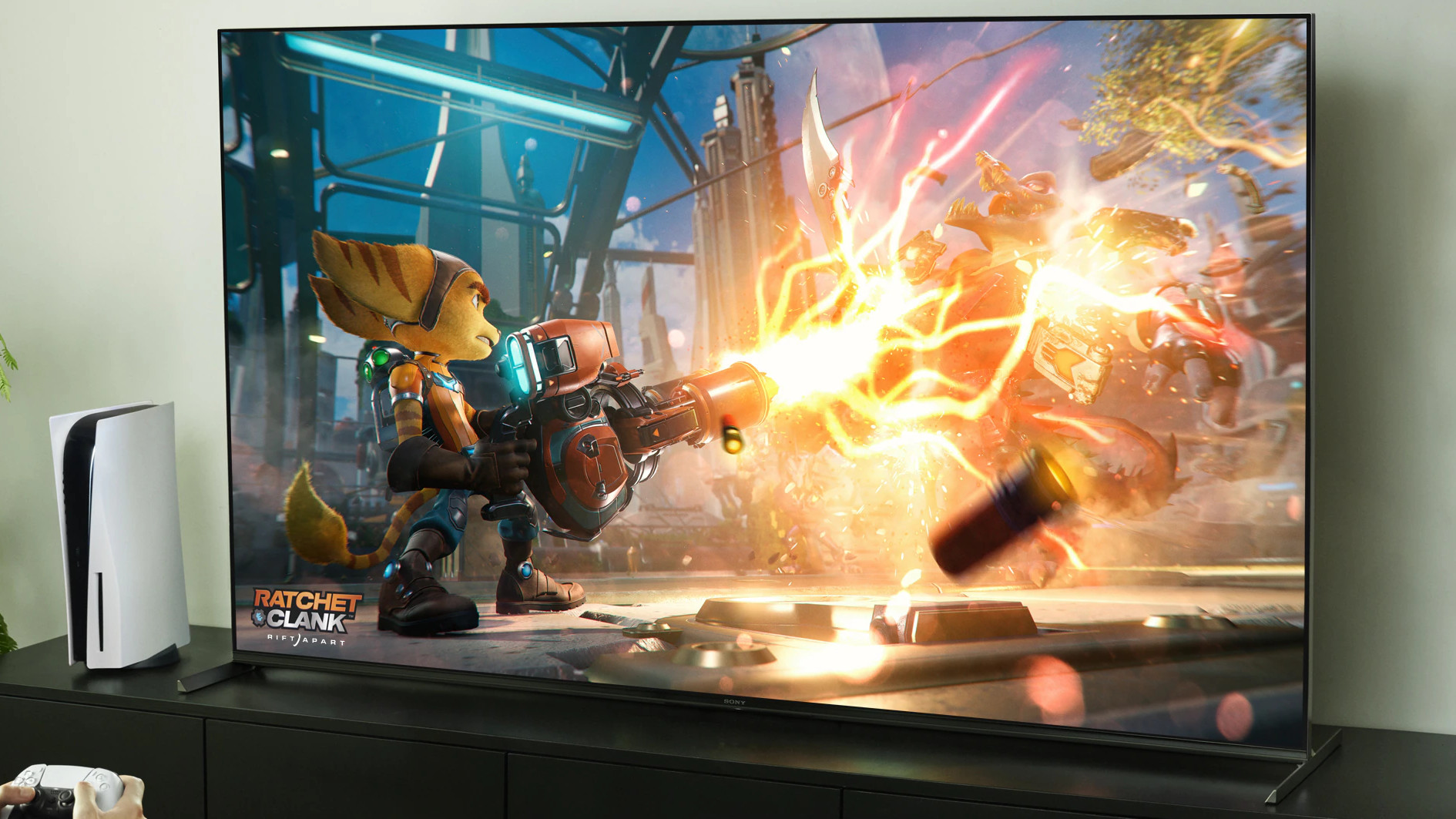
The best gaming TVs combine an array of useful gaming-related features with terrific picture quality and a price that reflects what you’re getting. As a competitive gamer myself, I look for the following features in particular: HDMI 2.1-compatibility, a native refresh rate of at least 120Hz and low input lag.
Right now, the best blend of performance, features and value is the LG C5, a mid-range OLED TV with jaw-dropping picture quality and nearly every gaming enhancement under the sun. This is the first TV I’d recommend to casual and competitive gamers alike.
That said, despite its inherent value, the C5 isn’t exactly budget-friendly. That’s why I’ve included several more picks on this list, most of which carry a more-affordable price.
Quick list
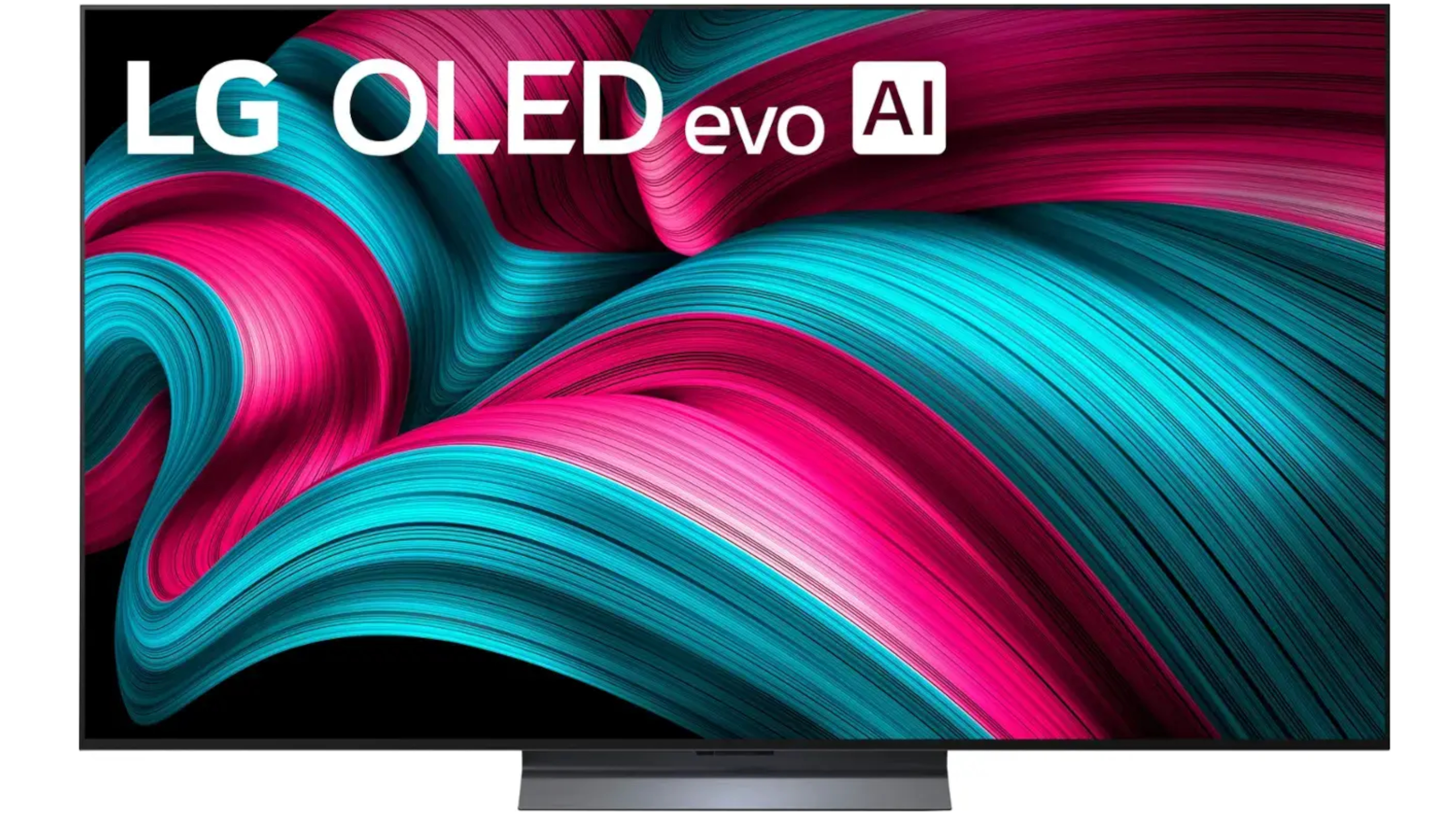
LG’s newest mid-range OLED TV delivers a class-leading selection of gaming-related features and the incredible picture quality OLED TVs are famous for. It’s one of my favorite TVs of 2025 for everything — not just gaming.
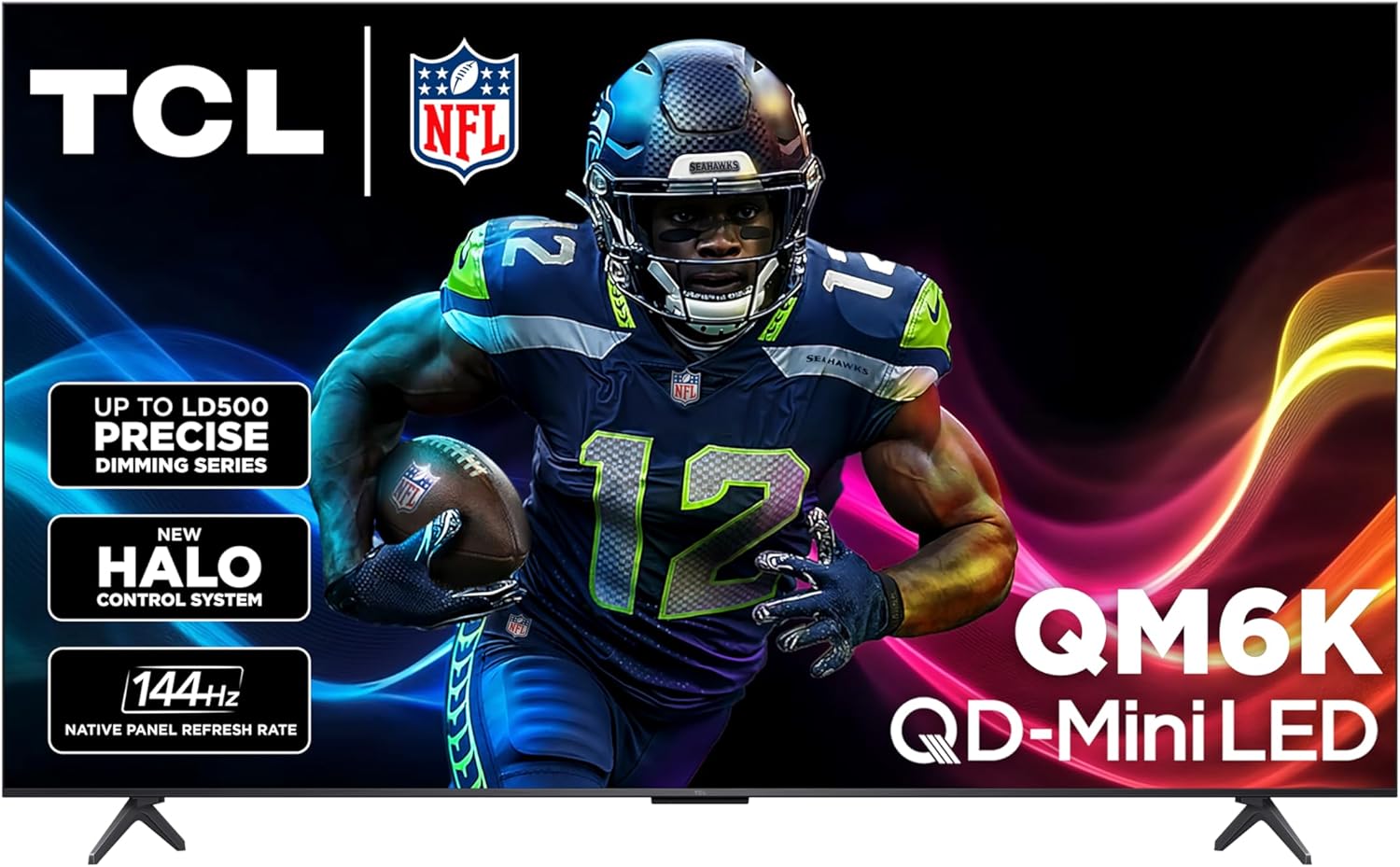
The best budget gaming TV is the TCL QM6K. It’s not as bright or gaming-ready as other sets on this list, but you’re still getting Mini-LED backlighting and enough gaming support for most levels of play.
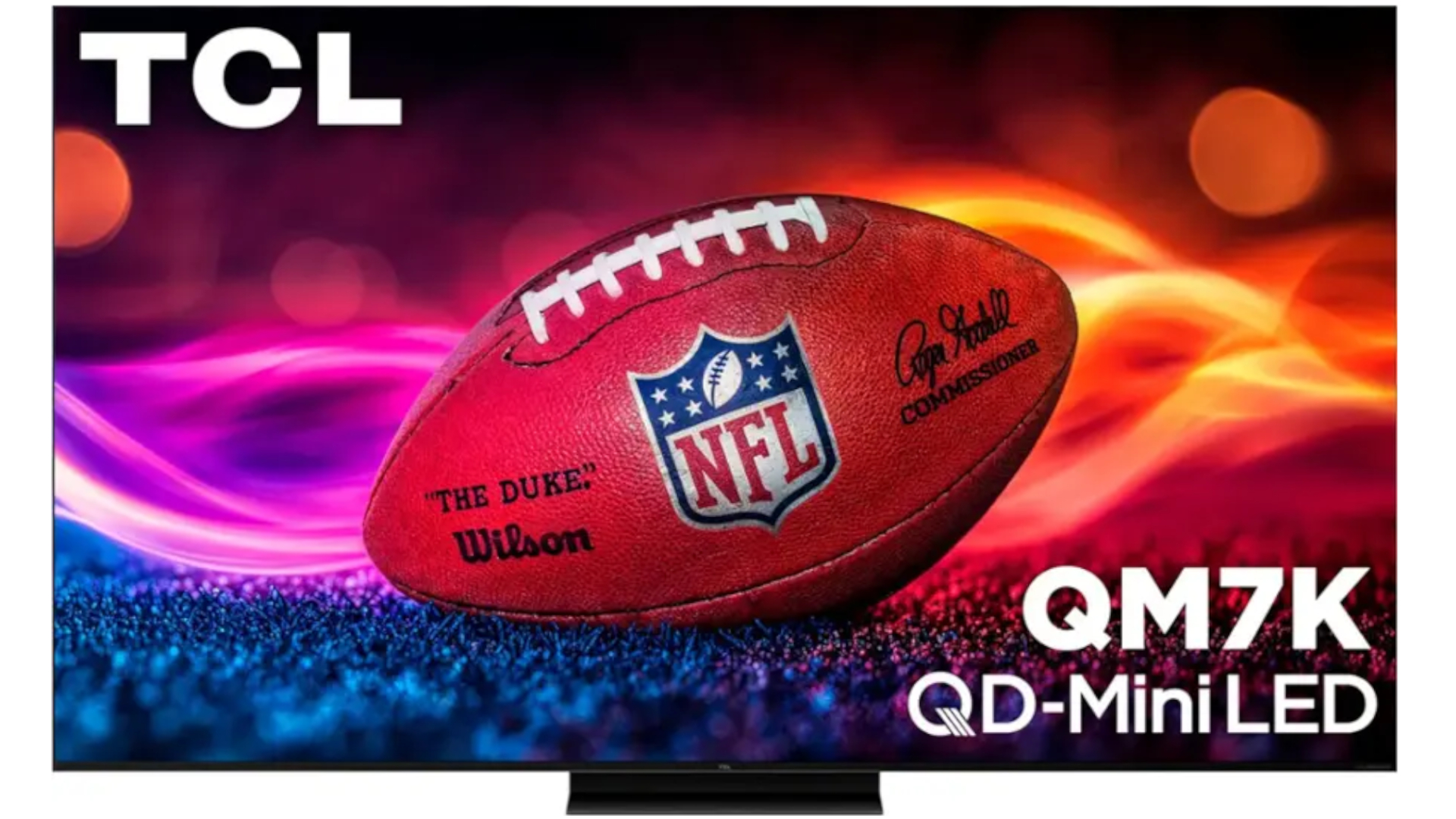
The gaming TV with the most value is the TCL QM7K. In addition to its competitive mix of gaming features, its Mini-LED display offers fantastic contrast control and a bright picture.
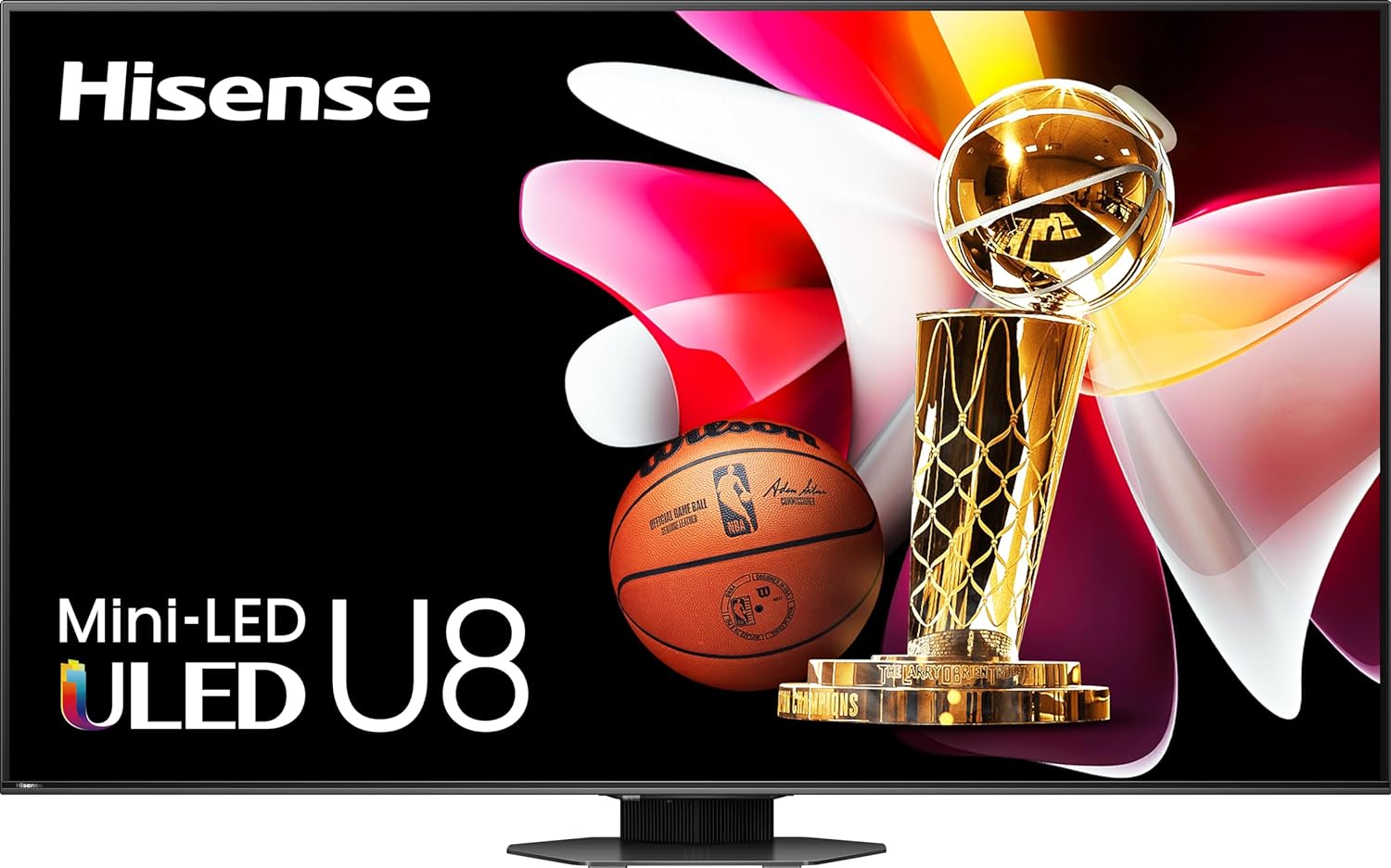
The searingly bright Hisense U8QG isn’t the best Mini-LED TV on the market, but it’s currently the best Mini-LED TV for the widest range of gamers once you factor in its relatively affordable price.
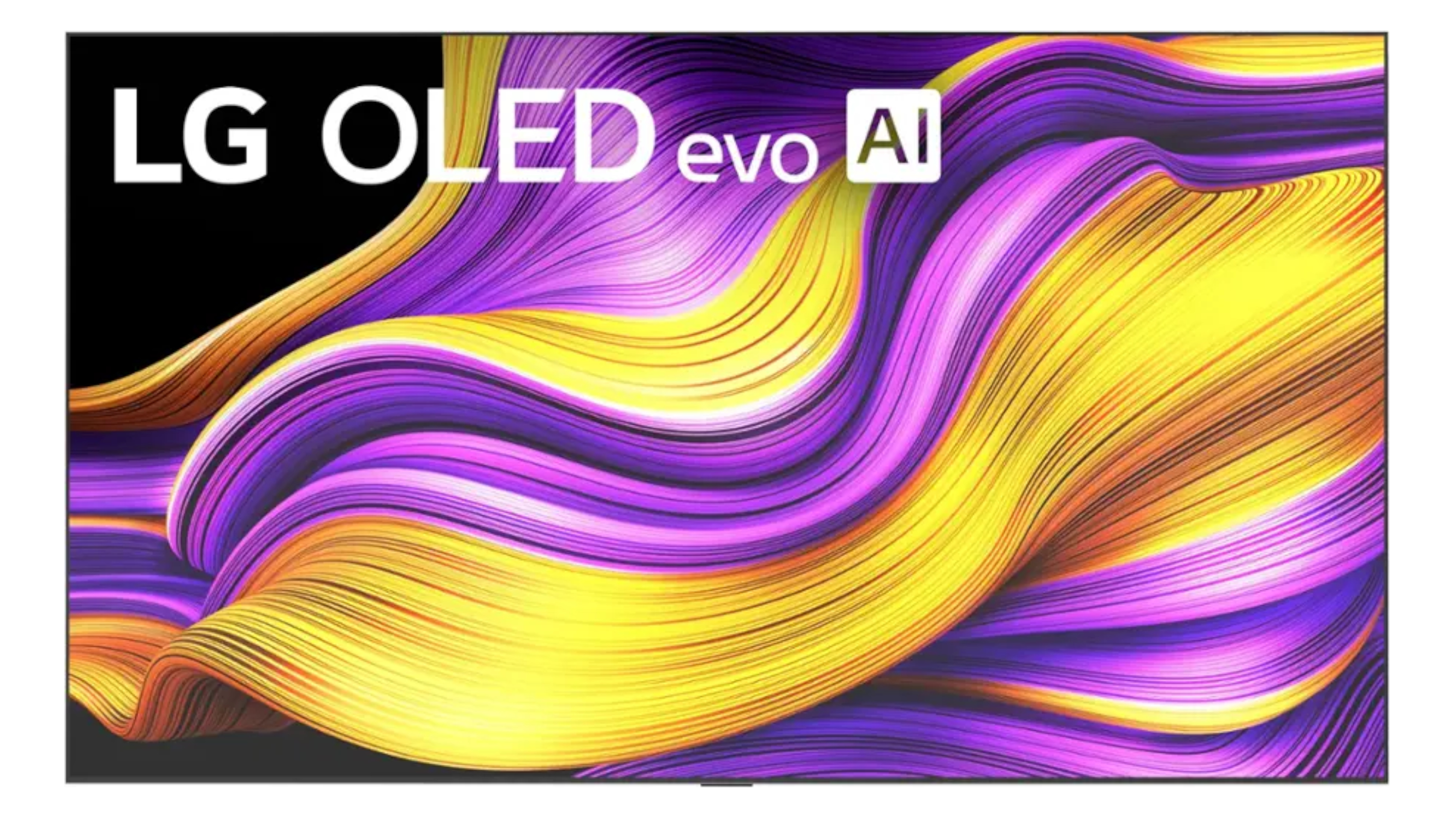
If you’re looking to splash out on a top-of-the-line TV, the LG G5 OLED is the best high-end gaming TV you can buy right now. It comes with all of the C5’s features along with a brighter, more-colorful picture than its mid-range counterpart.

Samsung’s flagship 8K Neo QLED is the only new 8K TV to hit the market in 2025, so if you want a new 8K TV to play on, the QN990F and its excellent performance are here for you.
About the author
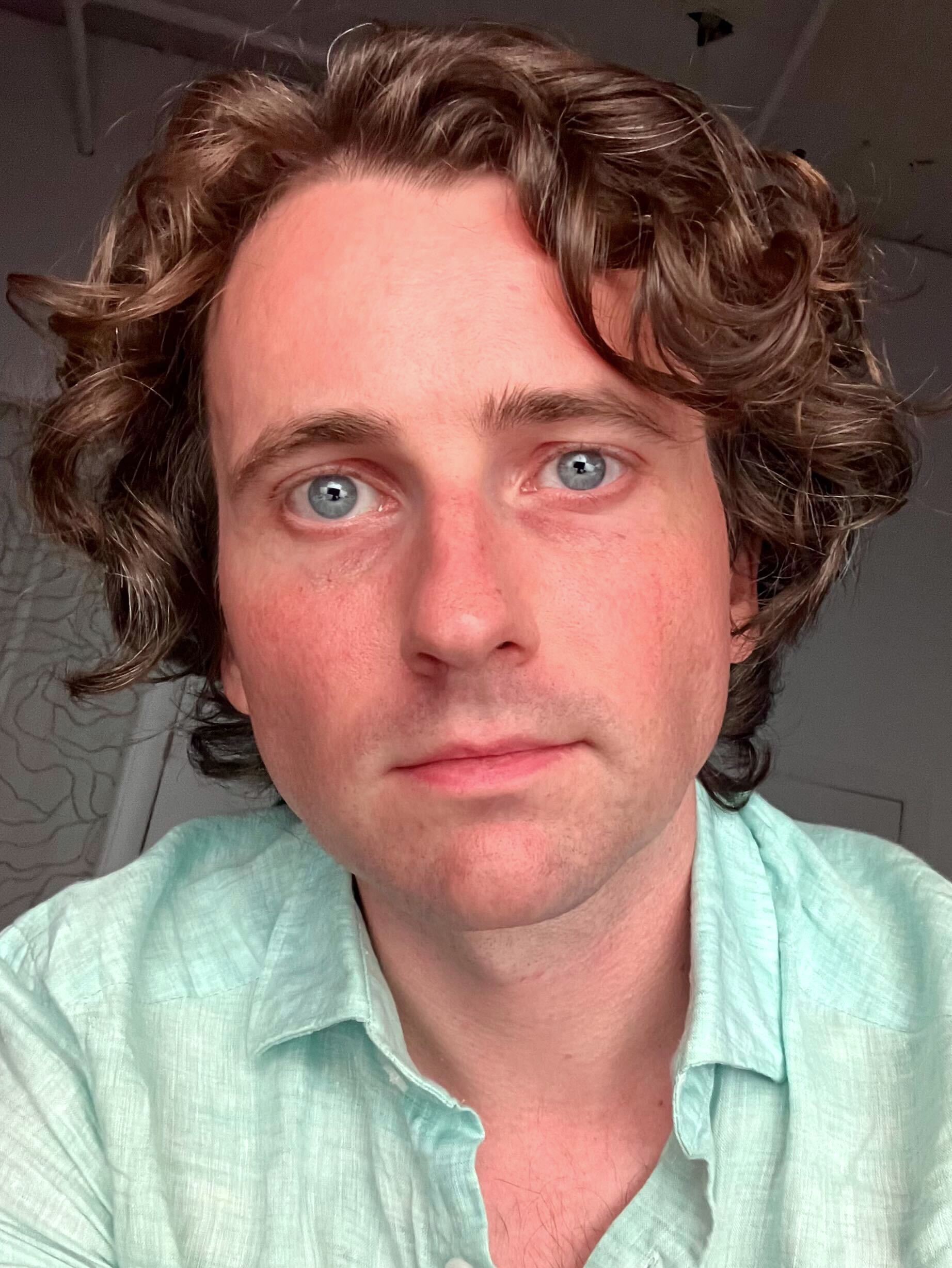
My name is Michael, and for over a decade, I’ve been testing and reviewing TVs. In fact, I’ve evaluated well over one hundred TVs in my day. I'm also a dedicated gamer, owning several consoles and doing most of my gaming in the living room.
The best gaming TVs you can buy today
Why you can trust Tom's Guide
Best gaming TV overall

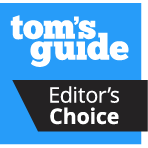
Specifications
Reasons to buy
Reasons to avoid
LG’s mid-range OLED TV is the overall best gaming TV you can buy right now, and one of the best TVs I’ve seen in 2025, period. It’s pricier than most TVs on this list, but when you factor in its performance and gaming capabilities, its value becomes clear.
The C5 arrives with nearly every gaming-related feature a dedicated gamer could ask for: full HDMI 2.1 compatibility, Variable Refresh Rate (VRR), ultra-low input lag and support for 4K gaming up to 144Hz. Also included is LG’s excellent Game Optimizer mode and Dolby Vision support. It’s the perfect companion for the Xbox Series X, PlayStation 5 and Nintendo Switch 2.
But my favorite aspect of the LG C5 is its picture quality. Like all OLED TVs, every pixel in the display is self-illuminating. As a result, the C5 delivers incredible contrast and perfect black levels without any light bloom. And, while the C5 isn’t nearly as bright as top-shelf OLED TVs, you’re still getting ample HDR highlight brightness for a deep, detail-rich picture. So, when you switch from game mode to movie night, the C5 will have your back. Its picture — especially in HDR — is astonishing.
Read our full LG C5 review.
Best budget gaming TV

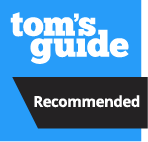
Specifications
Reasons to buy
Reasons to avoid
If you want a solid gaming experience but your top priority is saving money, I’ve got some good news: The TCL QM6K comes with a thorough selection of gaming features and costs considerably less than high-end gaming machines like the LG C5. In fact, you can routinely find the 65-inch version of the QM6K on sale for between $550 and $700.
As a budget-friendly TV, the QM6K compromises a bit on performance and features, but take it from an avid gamer: The most important gaming features are accounted for. There are only two HDMI 2.1-compatible ports, but the QM6K supports 4K gaming at 120Hz and up to 144Hz across both. You’re also getting VRR and FreeSync Premium Pro, two nifty features that allow for smoother gameplay.
According to our tests, the QM6K’s input lag isn’t quite as low as a higher-end gaming TV like the LG C5, but I don’t think most folks would even notice. Additionally, the QM6K is just a great, all-around TV for movies and shows, thanks in large part to its Mini-LED backlighting.
Read our full TCL QM6K review.
Best value gaming TV
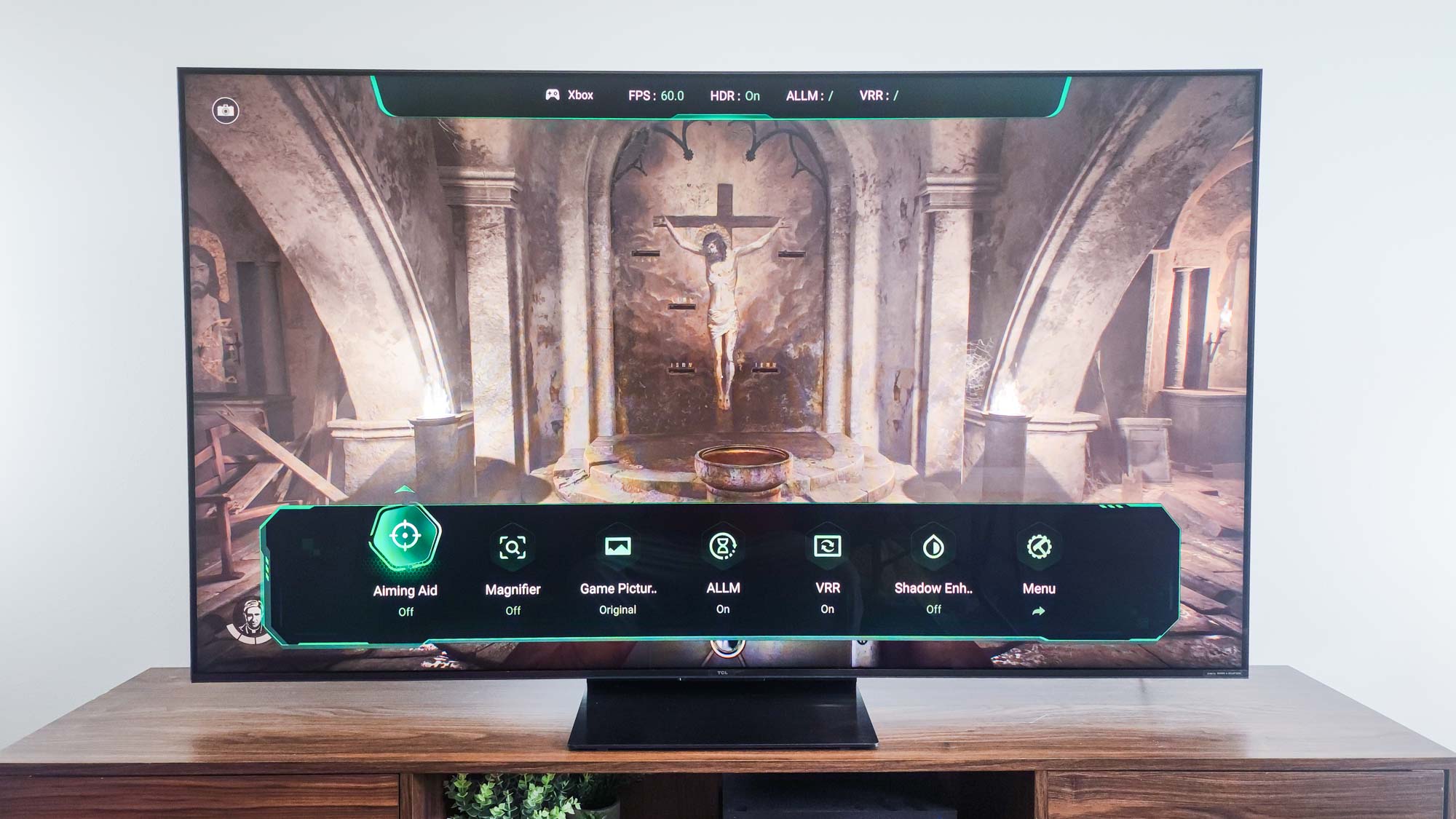

Specifications
Reasons to buy
Reasons to avoid
If saving money on a gaming TV is important but not necessarily your number-one priority, I highly recommend taking a close look at the TCL QM7K. As the name suggests, the step-up QM7K offers better performance and more features than the entry-level QM6K. These upgrades translate to a better gaming experience.
Just like its entry-level sibling, the QM7K arrives with a pair of HDMI 2.1 ports and support for 4K gaming up to 144Hz. Additional gaming features like VRR, FreeSync Premium Pro and Dolby Vision support for select titles are here, too. In fact, when you just compare their respective gaming features, the QM6K and QM7K are basically the same.
But you will see what the added cost of the QM7K amounts to when you look at its picture. The QM7K’s Mini-LED backlighting is brighter and more tightly controlled, which allows for a punchier, cleaner presentation — especially in HDR.
You’ll have to decide for yourself if the QM7K’s prettier picture is worth the extra cash, but if it were up to me, I’d splurge on the QM7K. It’s still a fantastic deal, and the superior performance isn’t just better for gaming, but for movies and shows, too.
Read our full TCL QM7K review.
Best Mini-LED gaming TV
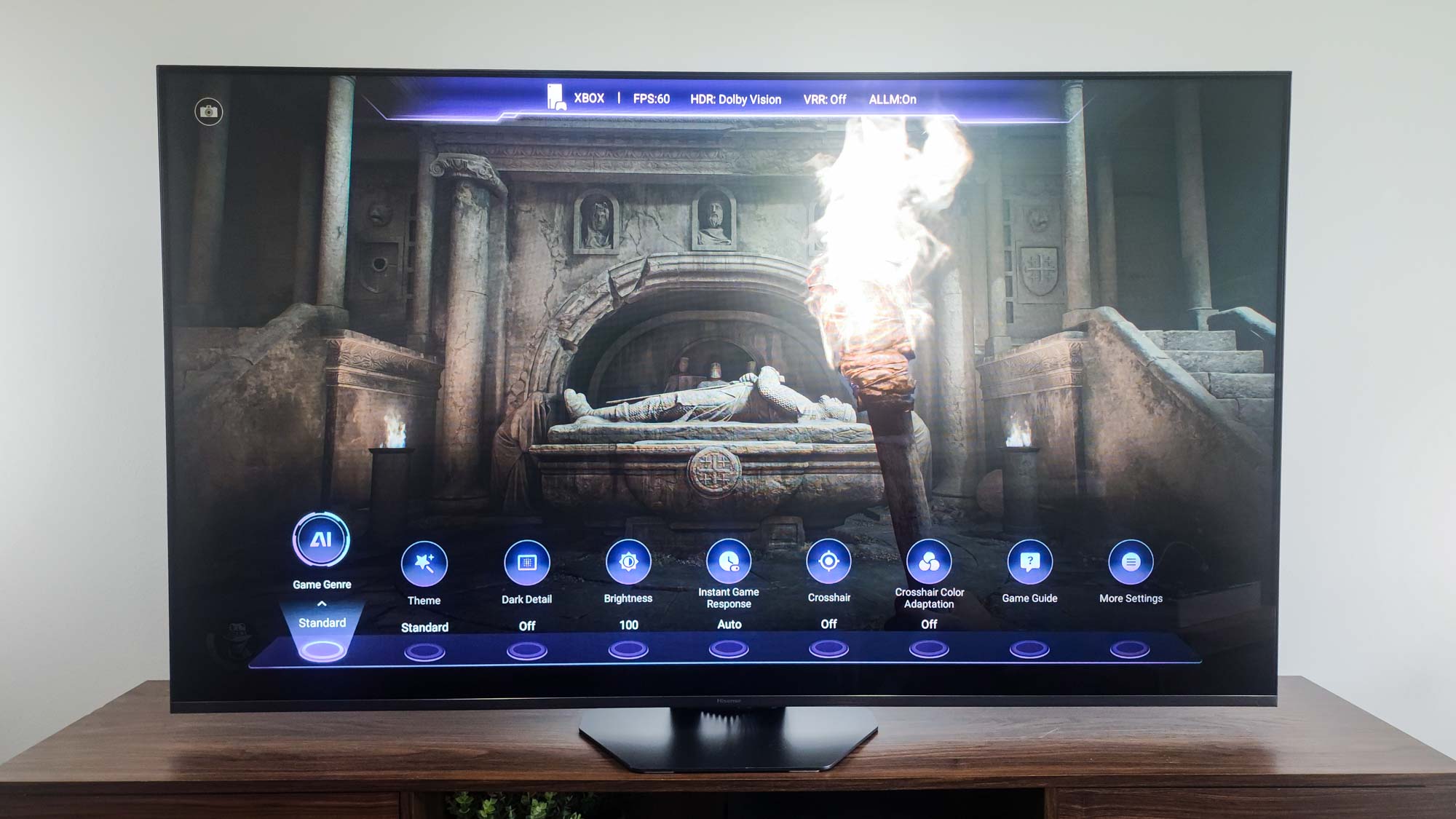

Specifications
Reasons to buy
Reasons to avoid
The best Mini-LED gaming TV for most folks is also one of the brightest TVs we've seen in 2025. The Hisense U8QG is a big, powerful TV with excellent picture quality overall, and thanks to its relatively low price and a gamer-friendly set of features, it's one of the better TV deals for gaming and beyond.
All three of the U8QG's primary ports are HDMI 2.1, but it's important to remember that there are only three HDMI ports in total, rather than the standard set of four.
The U8QG supports 4K gaming at 120Hz and up to 165Hz, supports FreeSync Premium Pro and Dolby Vision support is along for the ride, too. Its ultra-low input lag rivals that of the LG C5, and while its presentation isn't as eye-catching as LG's mid-range OLED, you're getting a picture with the U8QG that's brighter than just about every other TV on the market.
Read our full Hisense U8QG review.
Best high-end gaming TV
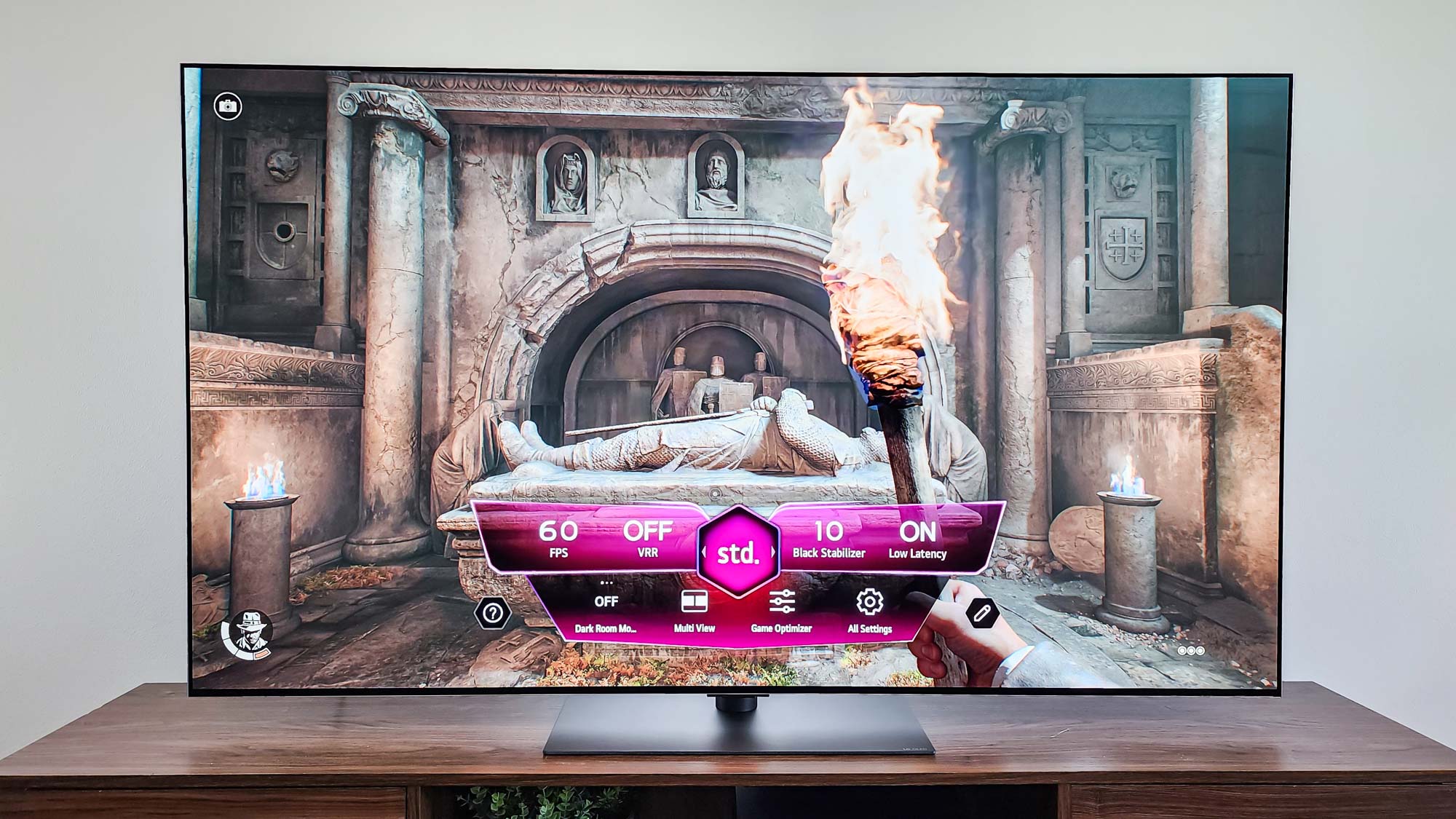

Specifications
Reasons to buy
Reasons to avoid
Looking for the best gaming TV on the market, regardless of cost? Look no further than LG’s flagship OLED TV for 2025, the G5. When it comes to gaming features, it’s basically the same TV as the LG C5. When it comes to picture quality, however, it’s a huge step above the C5.
The G5 has it all: a full slate of HDMI 2.1 inputs, support for 4K gaming at up to 165Hz, VRR, FreeSync Premium Pro and G-Sync compatibility. LG’s Game Optimizer mode is included, Dolby Support is here and the G5’s input lag measurement is among the lowest we’ve clocked this year.
But it’s LG’s 4th-generation, four-stack OLED panel that sets this TV apart from the mid-range C5 when it comes to both performance and price. The G5 is one of the brightest OLED TVs we’ve ever measured — over twice as bright as the C5. Its colors are more voluminous, too, thanks to LG’s newest OLED tech.
The G5 is one of the best I’ve ever had the pleasure of watching, and these performance advantages will make a huge difference in your day-to-day gaming experience.
I still maintain that the LG C5 is the better TV for most shoppers, but only for two reasons: Its price is much lower and it comes with a stand. The G5 is designed for wall-mounting first and foremost, but if you want a stand, you’ll need to shell out for it separately.
Read our full LG G5 review.
The best 8K gaming TV
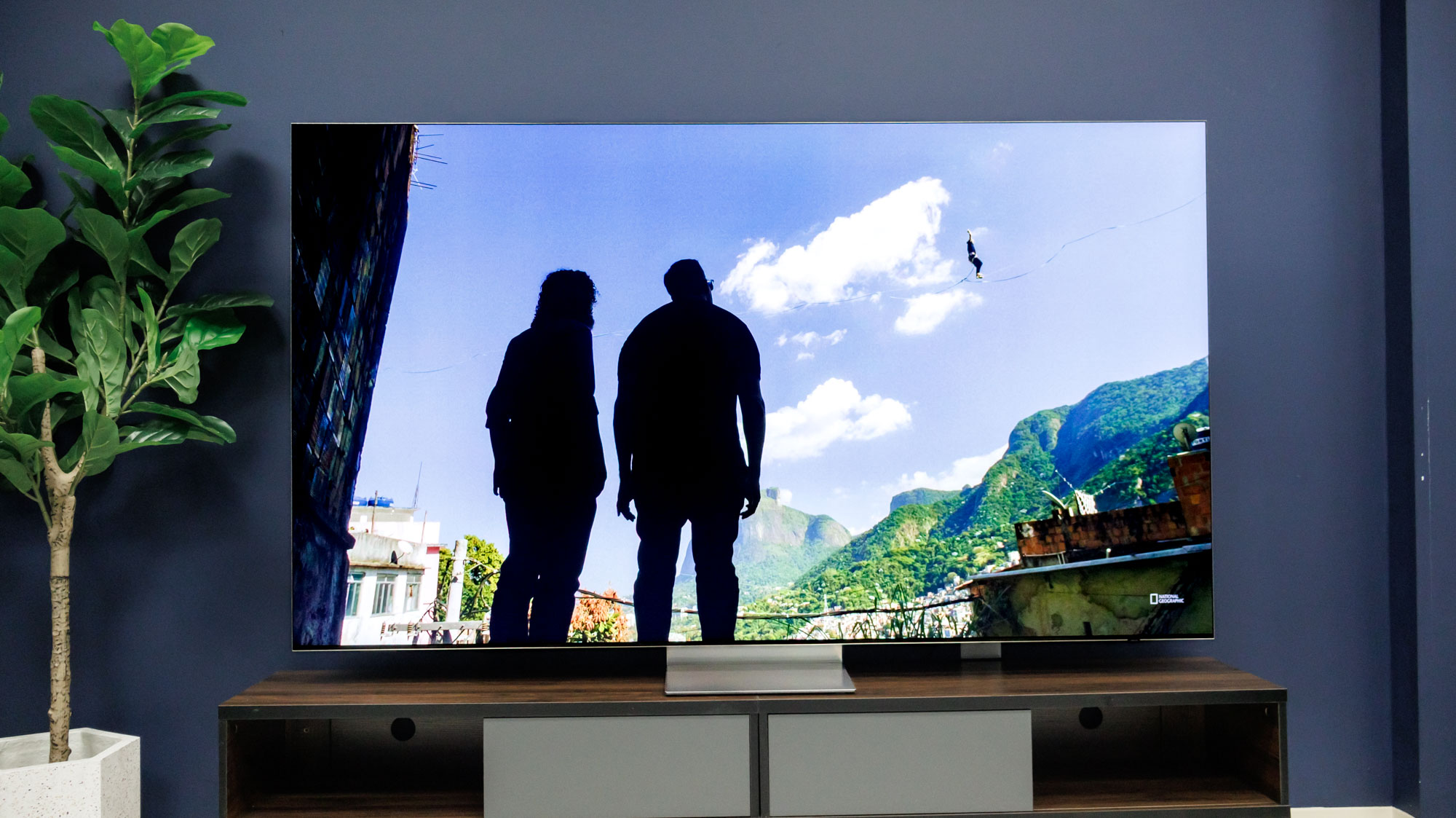

Specifications
Reasons to buy
Reasons to avoid
Currently, the only console that can output 8K resolution is the PlayStation 5 Pro, but if you absolutely must buy an 8K TV, the only new model you’ll find is the Samsung QN990F Neo QLED.
I’ve spent a good deal of time with Samsung’s latest 8K TV, and while I walked away impressed by its bright, well-engineered Mini-LED backlighting and its gorgeous color, you ought to be aware of two key points: Its price is only as high as it is because of its 8K display and there is very little in the way of native 8K content.
As a gaming TV, you’re getting the best set of gaming features that Samsung currently offers across its top-tier models. This includes support for 4K gaming at an astonishing 240Hz (or 8K at 120Hz), VRR, FreeSync and G-Sync support.
Unfortunately, 8K games aren’t exactly thick on the ground, so the QN990F can’t deliver much of an 8K gaming experience at the moment. Our testing also revealed that the QN990F’s input lag is noticeably higher than nearly every other high-end TV released in 2025, and this could have serious implications for competitive gaming.
This is where I admit that, If I had to choose between the QN990F and the LG G5, I’d opt for the G5 in a heartbeat. As a searingly bright OLED TV, it’s much a better-looking TV than the QN990F during most content. Its gaming features are comparable and its input lag is dramatically lower.
If you won’t back down from the idea of buying an 8K TV, by all means, explore the QN990F. But if you’re just looking to spend a pretty penny on an incredible gaming TV, don’t let the QN990F’s 8K resolution fool you into thinking that it’s the best option at your disposal.
Read our full Samsung QN990F review.
Test results
If you want more context in the technical side of how these gaming TVs perform, I’ve rounded up some of the key results from our lab testing to help you compare each model.
TVs | Peak Brightness (nits) | Delta-E (lower is better) | Rec. 2020 Gamut Coverage | Input Lag |
|---|---|---|---|---|
LG C5 | 1,165 | 1.3 | 76.18% | 9.2ms |
TCL QM6K | 688 | 1.0 | 71.23% | 13.1ms |
TCL QM7K | 1,734 | 1.4 | 79.22% | 13.1ms |
Hisense U8QG | 3,916 | 2.4 | 83.98% | 9.7ms |
LG G5 | 2,296 | 2.0 | 82.42% | 9.2ms |
Samsung QN990F | 1,402 | 2.2 | 75.81% | 36.4ms |
Peak brightness is exactly what it sounds like: a measurement of how bright the TV gets while receiving an HDR signal. This test involves measuring a 10% white window, so it more accurately describes highlight brightness, not the average brightness of the full picture.
Delta-E is a measurement that describes color error, with a lower number representing a more accurate average. A Delta-E of below 3 is considered a degree of error below what most people would be able to perceive with their naked eye.
Rec. 2020 (also known as BT. 2020) is an international color space standard for newer displays. The percentages in this column describe how much of that color space these TVs are capable of covering.
How I test gaming TVs
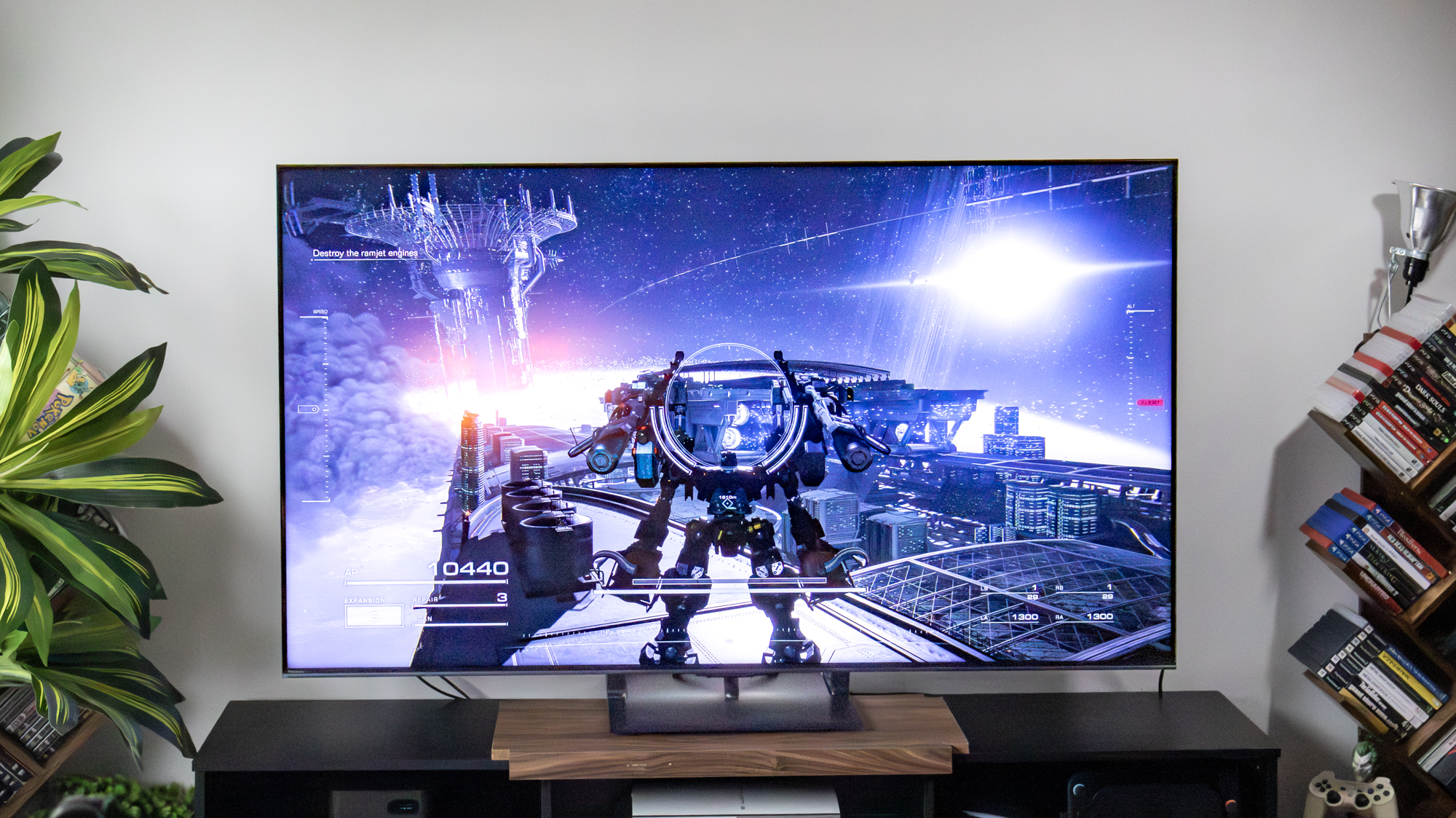
Every TV I evaluate goes through the same series of tests that measure brightness, color accuracy, overall contrast and a host of other performance-related metrics. I use these measurements to inform what I see with my own two eyes when watching movies and TV shows.
To get a sense of a TV’s gaming prowess, I test its input lag, play some Xbox titles here and there, and compare its software and features to other competitors on the market.
As with all product testing, blending hard data with hands-on use is a recipe for success. But the secret sauce is my decade-plus experience in testing and reviewing TVs — and the fact that I’m a dedicated gamer myself.
I catch and train Pokémon with the best of ‘em. I still frequently escape to the open world of “Red Dead Redemption 2” several years after its release, and I’ll happily talk for hours about “Disco Elysium” to anyone who’ll listen. Somewhat embarrassingly, I have over 1,200 hours of playtime with “Warhammer 40,000: Darktide” for Xbox Series X, a fast-paced test of reflexes where a TV’s input lag definitely matters.
I want you to have the best gaming TV you can justify buying (and not just because you’ll probably end up on my team at some point).
How to choose the best gaming TV for you

Let’s set aside picture quality for a moment, assuming that everyone wants the best-looking TV they can afford. These are the three things I’d pay attention to when shopping for the best gaming TV.
HDMI 2.1 support is quickly becoming a must-have feature for every type of gamer — not the just high-level, dedicated bunch.
You can read all about it in our HDMI 2.1 explainer, but I’ll give you the basic gist: An HDMI 2.1-compatible input unlocks key features supported by current- and next-generation consoles, including 4K- and 8K-resolution games at higher frame rates. A TV having two such inputs is nice, but four HDMI 2.1 inputs is the current gold standard.
If higher frame rates are what you’re after, you’ll want a gaming TV with a high native refresh rate. TVs typically come with 60Hz or 120Hz panels, and newer TVs can even display 4K games at 144Hz or 165Hz. A 60Hz TV can only display 4K content at up to 60fps. For 120Hz TVs, their limit at 4K is 120fps, and so on.
Keep in mind, though, that none of the current-generation consoles support anything higher at 4K than 120Hz — not even Xbox Series X or PlayStation 5 Pro. PC gamers who connect a rig to their TV can enjoy 4K games at 144Hz and 165Hz, however, provided their TV supports it.
Input lag (or latency) determines the amount of time — measured in milliseconds — that it takes for a press of the button to register on screen. This is especially important for fast-paced fighting, shooting or platforming games.
Fortunately, the majority of TVs manage to be good enough in this regard for all but the most-competitive of gamers, but every year, there are a handful of TVs whose relatively high input lag is worth warning about.
Once you square these crucial, gaming-related questions, you can start to dig a little deeper into things like brightness, display type and smart features. For instance, now that you know that the LG C5 and G5 are almost identical when it comes to their gaming support, you can start to get to the bottom of whether the G5’s added brightness and color volume is worth the extra cost.
Get instant access to breaking news, the hottest reviews, great deals and helpful tips.

Michael Desjardin is a Senior Editor for TVs at Tom's Guide. He's been testing and tinkering with TVs professionally for over a decade, previously for Reviewed and USA Today. Michael graduated from Emerson College where he studied media production and screenwriting. He loves cooking, zoning out to ambient music, and getting way too invested in the Red Sox. He considers himself living proof that TV doesn't necessarily rot your brain.
